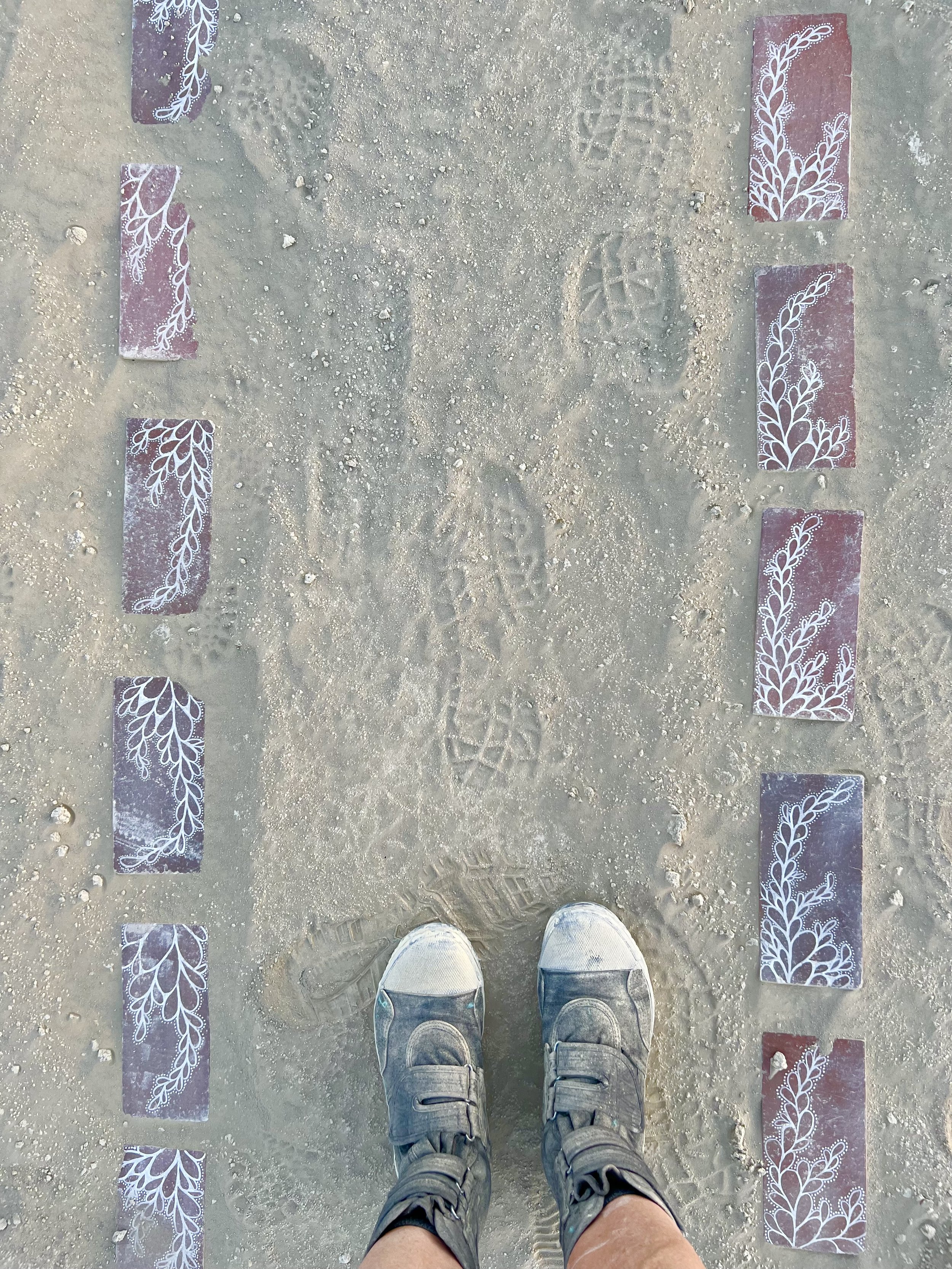why labyrinths?
Labyrinths have been known to deepen experiences during times of reflection and transition as well as inspire play and freedom of expression. They’re a conduit for flow, aid in transformation, and enrich rituals.
Ways we can work together in a guided solo or group sessions.
Stora Askeron, Sweden
defining labyrinths
Isn’t a labyrinth basically the same thing as a maze??
Not quite.
In its most simple form, a labyrinth is a single pathway that meanders towards a center and back out again.
Labyrinths and mazes are often confused with each other as both contain winding paths that could create an overall sense of feeling lost. However, in a labyrinth, you are never actually lost as there is only one path.
Unlike a maze, a labyrinth is calming rather than confusing. Your view is clear and open, free of dead-ends and walls. Traditionally, there is one way in and one way out. Trust the path!
LABYRINTH HISTORY
Dating back 4.000+ years, this mystical symbol has appeared across time and in cultures when contact with one another was outside the realm of possibility.
Some have speculated the labyrinth represents the oldest and deepest human archetype. It symbolizes something that is deeply embedded within the human psyche.
“The labyrinth symbol is the earliest known human work of art. That is to say, it’s the first drawing or image found to be wholly inspired by the human imagination. Unlike animals or even symbols like the spiral, the labyrinth symbol is not a copy of anything found in nature.” Labyrinth scholar David Willis McCullogh, The Unending Mystery
The earliest Labyrinth
Clay tablet from southern Greece
The dating of early labyrinth examples is often challenging and even controversial, but it remains clear the earliest reliably dated labyrinths are found in Southern Europe.
Those that have survived from the earliest episode of labyrinth history (~4,000 years ago) are primarily part scratched or painted on fragments of pottery, inscribed on old walls or carved on rock surfaces. Currently, the earliest example of the labyrinth symbol, for which an accurate and precise date can be determined, is on a Linear B* inscribed clay tablet from the Mycenaean palace at Pylos in southern Greece. Accidentally preserved by a fire that destroyed the palace ca. 1200 BCE, the front of the tablet records deliveries of goats to the palace, the square labyrinth scratched on the reverse is clearly a doodle by the scribe. “The First Labyrinths,” Labyrinthos Archive
*Linear B is the name for the late Minoan script which was first found on clay tablets and sealings in the second palace at Knossos on Crete. www.brown.edu
EVENT & HOME labyrinth INSTALLATIONS
Whether it’s designing and creating a labyrinth for your home or an installation for a retreat, we’ll make it happen. Live in another country or call the Pacific Northwest home? Either way, we’ll bring your ideas and dreams to life.
If you’re interested in a temporary or permanent labyrinth, go ahead and reach out. We’ll explore the options.








